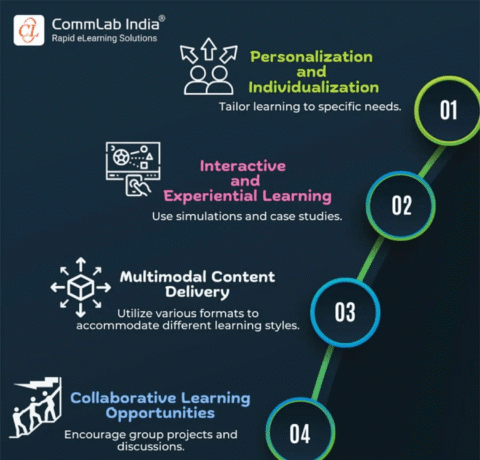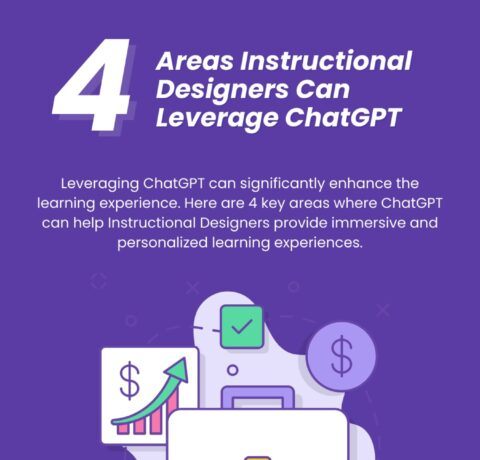Boosting Knowledge Retention in eLearning Infographic
If you are an instructional designer, have you wondered how you can create sticky courses? How can you create courses that learners will remember easily and recall effortlessly long after they are back at their workplaces? It is challenging because forgetting is natural. The Boosting Knowledge Retention in eLearning Infographic shows how you can create courses that are easy to remember and difficult to forget.
1. When possible, use diagrams.
Using graphic organizers (charts, graphs, diagrams, semantic maps etc.) to create meaning is a tried-and-tested learning strategy that has been proven to aid comprehension, retention, and recall in learners.
2. Incorporate unique and out-of-the-ordinary images.
Keep the element of surprise alive, so your learners are always on the edge of their seats, eagerly trying to anticipate what you are going to serve next. Here are some other ways to break patterns to boost knowledge retention:
- Use infographics.
- Use different layouts to arrange and present textual content.
- Use unconventional (read: weird) images or symbols to represent common ideas and associations.
- Use audio or video content when images are too common.
- Incorporate emphasis and contrast with color or paragraph size for important course elements.
3. Dish out sensory details.
The more the details in your content, the easier it is for the learners to create associations and remember better. The most powerful stories are descriptive pieces that paint vivid pictures with words to take us on journeys and stir intense passions in us. Visuals—photographs, illustrations, and videos—help you add details to stark facts and data. Words suffice as well. Use adjectives wisely, verbs to describe action, analogies, and comparisons to create memorable associations.
4. Use color theory.
Using colors to present content fires up the brain and stimulates intelligence across all levels, which in turn, forges more and stronger connections and aids memory formation and learning. Color can also be used to organize information more coherently. Colors also grab eyeballs readily and keep us hooked for longer lengths of time. Colors also help people remember because they affect our moods and evoke emotions. Warm tones like red, yellow, and orange excite the brain and make content memorable.
5. Exaggerate.
We remember outlandish stories. Exaggerated outcomes, images, exaggerated physical and emotional characteristics, and understatements are some effective ways to infuse life in dull eLearning content and keep the audience hooked to the course.
6. Small bites, at one's own pace.
An effective way to create short, succinct courses is to chunk content smartly. Chunking content means to break down and organize it into bite-sized chunks that are easily digestible. When you compress data and arrange it to create logical associations, it is easy for learners to process the information without burdening the long-term memory. Chunking is also an effective way to shorten your course by doing away with all the fluff and only retaining information that is critical to the learning process. This, in turn, leaves you with less content to cram into a single session!
7. Spaced repetition.
New skills can be learned by repeating the actions needed to perform a task. We learn a new language only if we speak it often. Practice, indeed, makes a man perfect.
Read also: 7 Tips For eLearning Professionals To Enhance Knowledge Retention







You can adjust your cookie preferences here.